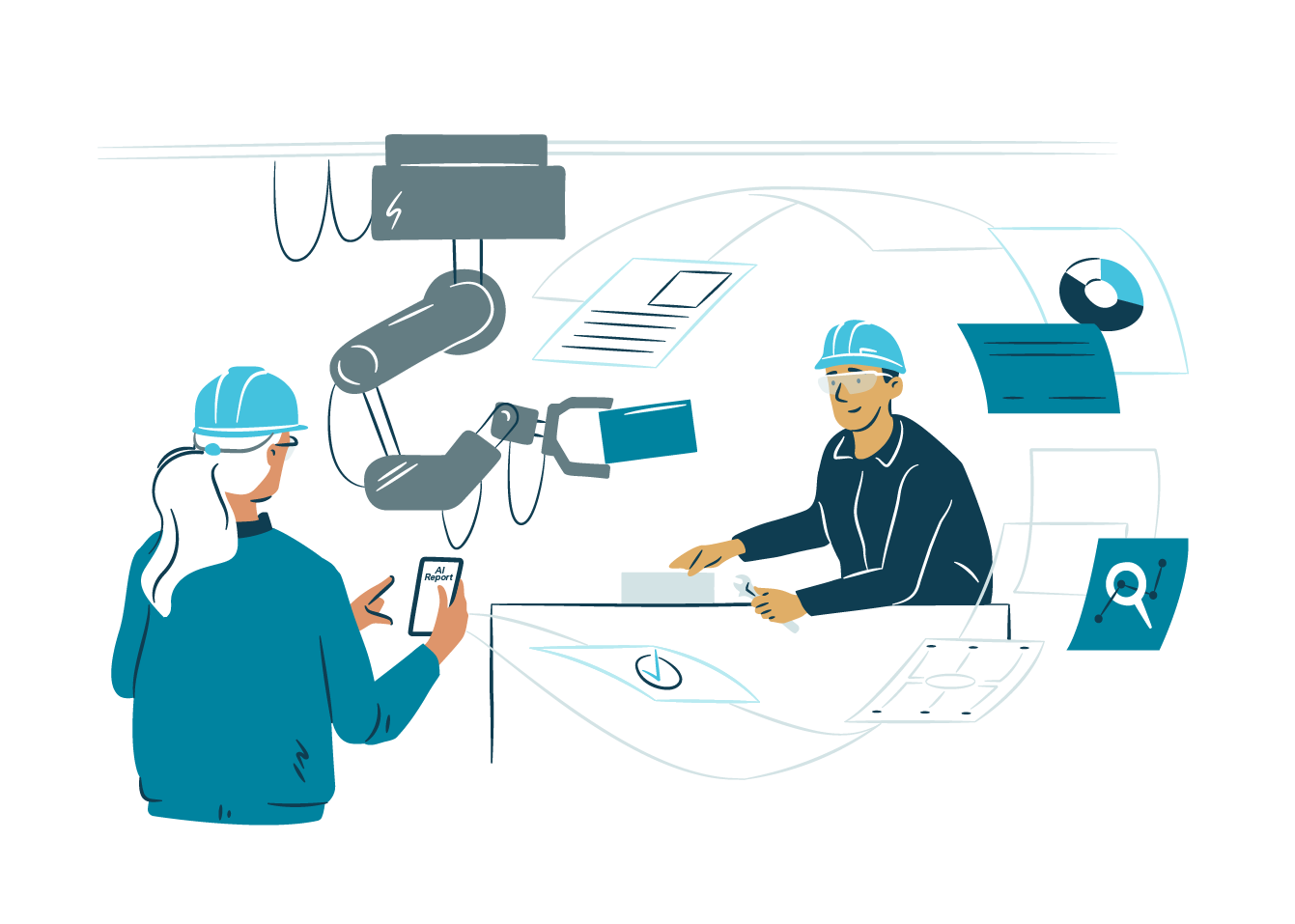In this blog series I’ll tell you what are High-Performance Teams, their benefits for people and business, the most important factors of high-performing teams and how to build them.
What is the most important factor of a high performing team?
According to Google’s research psychological safety is the most important factor in achieving high-performance teams (or groups with same interest). To put it another way you must feel safe to take risks in front of your teammates without feeling insecure or embarrassed.
High performance teams are build on trust. Research has revealed organizational trust as a key part of culture that directly influences how willing your employees are to go above and beyond in their roles. Frictions naturally occur when humans congregate, but at the same time, our brains are built to work in teams so there is a tension between wanting to be a team member and seeking to avoid conflicts with others by avoiding other humans. Research on the neuroscience of trust has shown that trust acts as a social lubricant, reducing social frictions so working with others is easier, more efficient, and more enjoyable. And when people work more effectively together, productivity and innovation levels rise.
Google’s research revealed that those working in companies in the top quarter of trust, compared to those in the lowest quarter, have 106% more energy at work, are 76% more engaged at their jobs, are 50% more productive, and suffer 40% less burnout. Those in high-trust workplaces are 50% more likely to stay with their employer over the next year and 88% would recommend their company as a place to work to family and friends. Not surprisingly, employees in high-trust companies are 56% more satisfied with their jobs. When one enjoys being at work (high trust colleagues experience 60% more joy at work than those in low trust companies), satisfaction with one’s life outside of work is also higher — 29% higher for those who have the good fortune of working in high trust companies. Trust improves performance no matter how you measure it.
Benefits of a High-Performance Team
Googles research project (project Aristotele) found that psychological safety was both the aspect most reliably shared by high performing teams (among a set of five traits that separated high performing teams from the others with the remaining four being structure and clarity, dependability, meaning, and impact) and also the most foundational of these traits, that is, without psychological safety, you cannot have a high-performing team. Project Aristotle as well as other studies have found that psychological safety is strongly associated with objective (e.g. sales revenue) and subjective indicators of team performance (e.g. ratings of team performance by team members and managers, customer satisfaction with team products). The strongest effect of psychological safety on team performance appears to be through its beneficial effects on team learning with studies reporting psychological safety enabling the faster adoption of new technologies (process innovation), the faster adaptation to new market circumstances and customer requirements, the early identification of potentially catastrophic risks, and the faster development of innovative products.
In this text I’ll tell how to create create high performance teams and unleash full potential of every possible team.
When to invest on team performance improvement?
So how do you know when it is time to start creating a high performance team, is it even needed or is it already reached?
Think for a moment about your work and the work team you are a part of.
Ask yourself the following questions:
- Do people feel comfortable in team meetings asking about things they do not know or they do not understand, or do they generally try to maintain an image of perfect knowledge about work matters?
- Do people feel comfortable in team meetings raising difficult issues, concerns and reservations about specific pieces of work, about ‘how things are done here’ or about how well the team works together or do these conversations take place informally outside team meetings?
- What happens when mistakes, near misses, failures and critical incidents happen? Is people’s first reaction to distance themselves from them so they are not blamed or are they seen as opportunities for team learning?
- How often do people give and receive feedback? Do people invite others who are not members of the team to give feedback on the team’s work?
- In team meetings, are all team members invited to contribute irrespective of their rank or job title?
- Do you feel that your skills and talents are valued and utilized? Are you encouraged to contribute in any way you feel able to? Or do you feel you are you expected to stay strictly within the parameters of your role and to seek permission for doing anything else?
- Have there been times when you felt that your contribution and efforts were compromised by others in the team?
- Do people ask each other and the team for help when they need it?
- In team meetings, do people feel comfortable expressing disagreement and offering dissenting views? Do team meetings include discussions and debates about work matters?
- How much do you know of your team members as people outside work?
What picture do your answers to these questions paint of your team? How much would you say this picture relates to how happy you are with your team and your place in it, and to your team’s performance?
Teams performance can be measured by asking following questions from all team members. If their scores are low then it is time to start investing in performance improvement.
Questions for the team:
1. If you make a mistake on this team, it is often held against you.
2. Members of this team are able to bring up problems and tough issues.
3. People on this team sometimes reject others for being different.
4. It is safe to take a risk on this team.
5. It is difficult to ask other members of this team for help.
6. No one on this team would deliberately act in a way that undermines my efforts.
7. Working with members of this team, my unique skills and talents are valued and utilized.
Tools to help understanding status of teams performance here.
If you think of teams in which you have been a part of, how would you answer to these questions? What are your thoughts to these questions with your current team?
Be sure to check Secrets Of High-Performance Teams Part 2 and Part 3, if you want to get concrete actions on how get your team members to answer ”Yes” to these questions and truly improve you team performance!
Sami Kutvonen
Technical Project Manager (Scrum Master, Agile Coach)
Sources:
Five Dysfunctions of a Team, Patrick Lencioni
https://rework.withgoogle.com/blog/five-keys-to-a-successful-google-team/
https://rework.withgoogle.com/blog/creating-a-high-trust-performance-culture/
https://management30.com/practice/personal-maps/
https://www.linkedin.com/pulse/deep-dive-five-dysfunctions-team-summary-notes-tons-more-omar-usman
https://blogs.hope.edu/center-for-faithful-leadership/uncategorized/five-dysfunctions-of-a-team/
https://medium.com/@johnpcutler/of-course-psychological-safety-but-how-21adb8d97ba7
http://abinoda.com/book/five-dysfunctions-of-a-team
https://www.tablegroup.com/imo/media/doc/Team_Effectiveness_Exercise.pdf
https://www.goodreads.com/work/quotes/22516-the-five-dysfunctions-of-a-team



